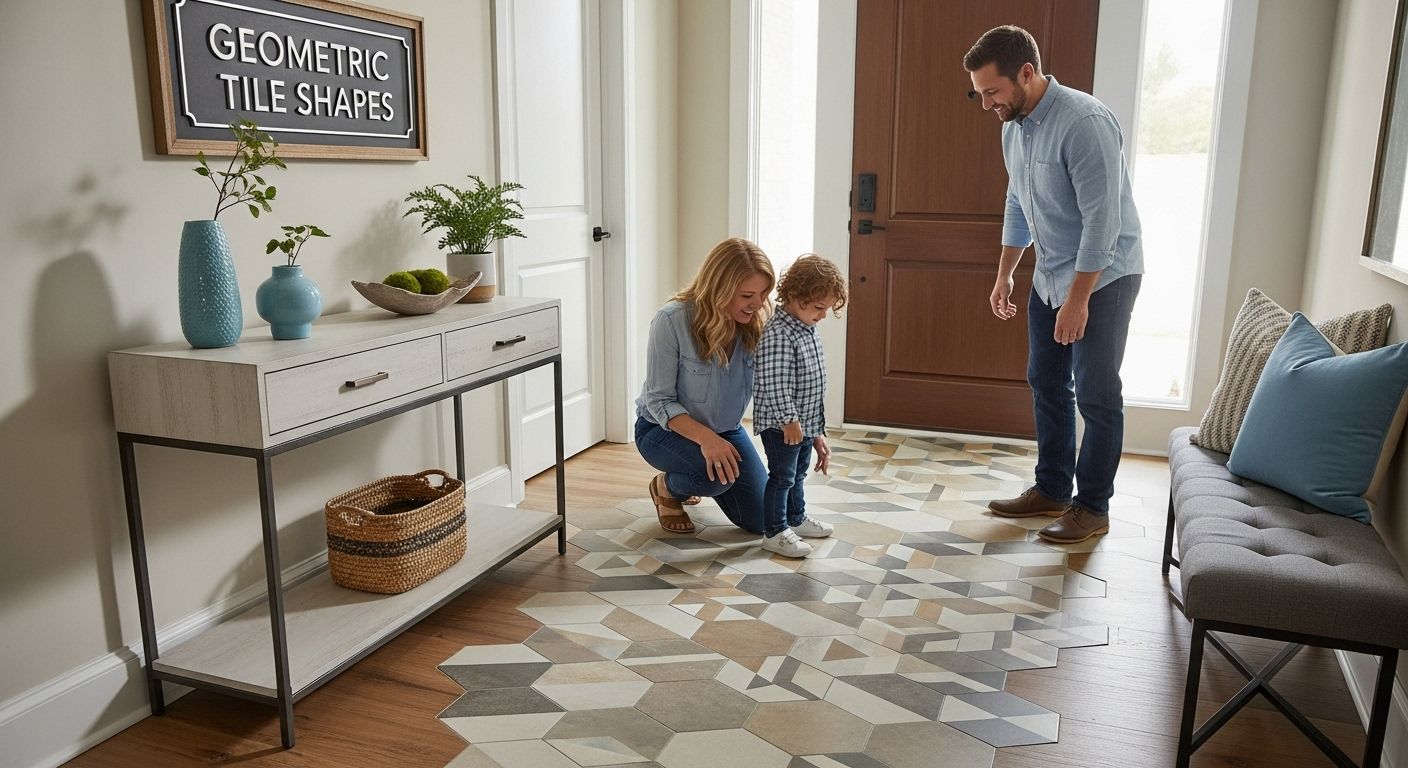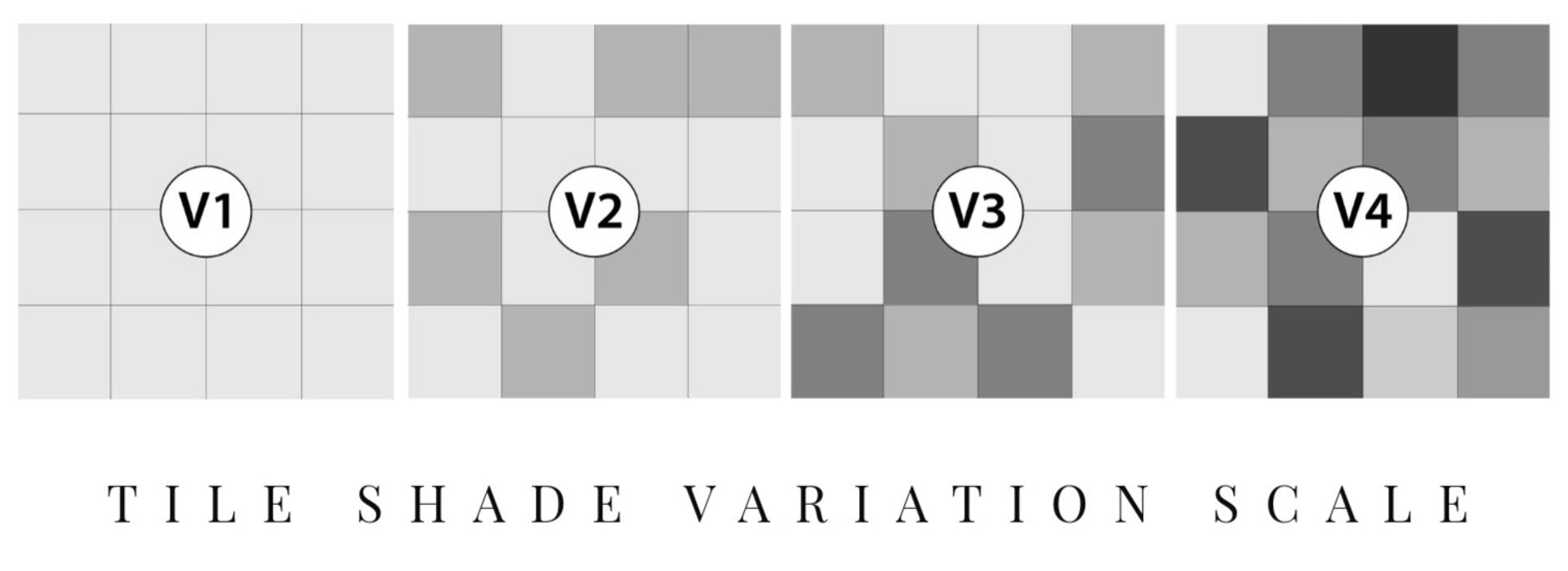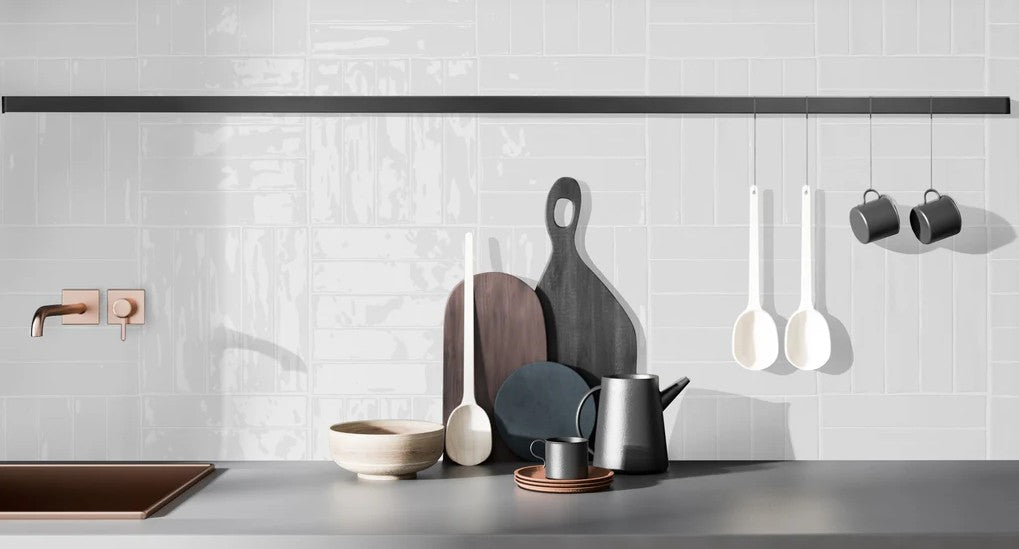Geometric tile shapes turn ordinary floors and walls into vibrant art. Think about this. A simple change in pattern can make a small room feel much bigger or add surprising depth to any space. Most people assume tiles are just for covering surfaces, but these shapes actually shape your experience in the room in ways you might not expect.
Table of Contents
- Defining Geometric Tile Shapes: What Are They?
- The Importance of Geometric Tile Shapes in Design
- How Geometric Tile Shapes Influence Space and Texture
- Exploring Different Types of Geometric Tile Shapes
- Practical Applications of Geometric Tile Shapes in Interiors
Quick Summary
| Takeaway | Explanation |
|---|---|
| Geometric tiles enhance design sophistication. | These tiles use mathematical principles to create visually compelling and intricate patterns. |
| Selecting shapes impacts spatial perception. | Different geometric configurations can make spaces feel larger or cozier, influencing how people experience a room. |
| Strategic design balances aesthetics and function. | Geometric shapes serve practical purposes while providing artistic value, helping to manage light and visual flow. |
| Engage sensory experience through texture. | Surface textures paired with geometric shapes create multisensory interactions, transforming passive backgrounds into active design elements. |
| Geometric tiles invite design exploration. | Their unique arrangements challenge traditional layouts, encouraging creative approaches to interior design. |
Defining Geometric Tile Shapes: What Are They?
Geometric tile shapes represent a sophisticated design approach that transforms ordinary surfaces into artistic canvases through mathematically precise patterns and configurations. These unique tile arrangements leverage fundamental geometric principles to create visually compelling spaces that go beyond traditional rectangular or square layouts.
The Mathematical Essence of Geometric Tile Shapes
At their core, geometric tile shapes are defined by specific mathematical properties that determine how they interlock, repeat, and create visual patterns. According to research from Dartmouth College, these shapes follow precise tessellation rules, where tiles cover a surface completely without gaps or overlaps. Common geometric tile shapes include:
- Equilateral triangles
- Regular hexagons
- Parallelograms
- Rhombuses
- Trapezoids
Design Principles and Visual Impact
Geometric tile shapes are not just mathematical constructs but powerful design elements that introduce rhythm, movement, and visual intrigue into interior spaces. By strategically arranging these shapes, designers can create optical illusions, establish focal points, and manipulate perceived spatial dimensions.
While traditional tiles often follow predictable grid patterns, geometric tile shapes challenge conventional design norms. They invite visual exploration by creating complex, interlocking configurations that draw the eye and spark architectural curiosity. Learn more about creative tile design techniques.

When selecting geometric tile shapes, homeowners and designers must consider factors like room size, lighting, and overall aesthetic goals. The right geometric pattern can transform a mundane surface into a statement piece, reflecting personal style and architectural sophistication.
Below is a comparison table outlining classic geometric tile shapes, their defining geometric feature, and the visual impact each brings to interior design spaces.
| Tile Shape | Geometric Feature | Visual Impact |
|---|---|---|
| Equilateral Triangle | Three equal-length sides, 60° angles | Dynamic, interconnected patterns |
| Hexagon | Six equal sides, 120° angles | Honeycomb appearance, visual complexity |
| Rhombus | Four equal sides, opposite equal angles | Diagonal movement, perception of depth |
| Parallelogram | Opposite sides equal and parallel | Skewed patterns, sophisticated visual flow |
| Trapezoid | A pair of parallel sides | Asymmetrical, introduces visual tension |
The Importance of Geometric Tile Shapes in Design
Geometric tile shapes transcend mere decorative elements, emerging as powerful design tools that fundamentally transform spatial experiences. These sophisticated patterns offer architects and designers a nuanced approach to creating visual narratives within interior environments, communicating aesthetic sophistication through mathematical precision and intentional spatial organization.
Psychological and Aesthetic Impact
According to research published in Frontiers in Human Neuroscience, geometric tile designs profoundly influence human perception and emotional responses. These intricate patterns do more than cover surfaces they actively engage viewers by:
- Creating visual rhythm and movement
- Establishing spatial depth and dimensionality
- Guiding visual attention through strategic configuration
- Generating psychological impressions of order and complexity
The strategic selection of geometric tile shapes allows designers to manipulate perceived spatial qualities, making rooms feel larger, more intimate, or dynamically energetic depending on the chosen configuration.
Functional Design Considerations
Beyond aesthetic appeal, geometric tile shapes serve critical functional purposes in architectural design. They offer practical solutions for managing visual flow, managing light reflection, and creating intuitive spatial transitions. Explore innovative tile design strategies that leverage these geometric principles to transform ordinary spaces into extraordinary environments.
Professional designers understand that geometric tile shapes are not simply decorative choices but strategic design interventions. By carefully selecting shapes, scale, and arrangement, they can dramatically alter a room’s perceived architecture, influencing how people move through and experience interior spaces. The right geometric tile design becomes a silent choreographer of spatial experience, guiding perception and emotional engagement with remarkable subtlety.
How Geometric Tile Shapes Influence Space and Texture
Geometric tile shapes are transformative design elements that extend far beyond surface decoration, actively sculpting spatial perception and tactile experiences. These intricate configurations leverage mathematical precision to manipulate light, create visual depth, and fundamentally reshape how individuals interact with interior environments.
Spatial Perception and Visual Dynamics
According to research published in the National Center for Biotechnology Information, surface textures and geometric configurations dramatically influence spatial perception. Different tile shapes can generate powerful optical illusions that fundamentally alter room dimensions:
- Large hexagonal tiles can make spaces feel more expansive
- Small triangular tiles create visual complexity and perceived intimacy
- Diagonal tile arrangements can introduce dynamic movement
- Repeating geometric patterns can visually elongate or widen rooms
The strategic placement and scale of geometric tile shapes act as visual choreographers, guiding viewers’ eyes and creating intuitive spatial narratives that transcend traditional rectangular layouts.
Textural Interactions and Sensory Engagement
Geometric tile shapes are not merely visual constructs but sensory experiences that engage multiple perceptual channels. Surface textures combined with precise geometric configurations create multidimensional interactions that transform walls and floors from passive backgrounds into active design elements. Discover innovative texture design techniques that leverage these sophisticated principles.
Designers who understand geometric tile shapes recognize them as powerful tools for spatial storytelling. By carefully selecting shapes, scales, and arrangements, they can create environments that feel simultaneously structured and dynamic, inviting exploration and emotional engagement through thoughtful geometric compositions.
This table highlights how various configurations of geometric tile shapes influence both the perception of space and the sensory experience within interiors.
| Configuration/Feature | Effect on Spatial Perception | Sensory/Design Impact |
|---|---|---|
| Large Hexagonal Tiles | Make spaces feel more expansive | Create smooth, continuous visual flow |
| Small Triangular Tiles | Visual complexity and perceived intimacy | Add intricate detail, increase tactile interest |
| Diagonal Tile Arrangements | Introduce dynamic movement | Directs attention, energizes room layout |
| Repeating Geometric Patterns | Visually elongate or widen rooms | Establish rhythmic, harmonious design |
| Textured Geometric Surfaces | Enhance sense of depth | Encourage sensory engagement, create focal points |
Exploring Different Types of Geometric Tile Shapes
Geometric tile shapes represent a diverse and sophisticated design language, offering architects and designers an expansive palette of mathematical configurations that transform interior spaces. These intricate shapes go far beyond traditional rectangular layouts, introducing complexity, rhythm, and visual dynamism through precise geometric principles.
Classic Geometric Tile Configurations
According to research from Dartmouth College, geometric tile shapes can be categorized into several fundamental types that provide unique spatial experiences:
- Equilateral Triangles: Create dynamic, interconnected patterns with 60-degree angles
- Hexagons: Generate honeycomb-like structures with exceptional visual complexity
- Rhombuses: Introduce diagonal movement and diagonal spatial perception
- Parallelograms: Offer sophisticated, skewed geometric arrangements
- Trapezoids: Provide asymmetrical design opportunities with intriguing visual tension
Advanced Geometric Tile Strategies
Beyond basic shapes, designers employ sophisticated techniques to manipulate geometric tile configurations. Scale, orientation, and color interactions become critical tools for spatial storytelling. Explore comprehensive tile design techniques that push the boundaries of traditional tiling approaches.
Professional designers understand that geometric tile shapes are not merely decorative elements but powerful spatial instruments. By carefully selecting and arranging these mathematical forms, they can create environments that challenge perceptual expectations, guiding viewers through intricate visual journeys that transform ordinary surfaces into extraordinary design statements.

Practical Applications of Geometric Tile Shapes in Interiors
Geometric tile shapes transcend mere decorative elements, emerging as sophisticated design strategies that transform interior spaces through mathematical precision and visual storytelling. These intricate configurations offer architects and designers powerful tools for creating dynamic, responsive environments that engage occupants on multiple sensory levels.
Spatial Transformation Techniques
According to research exploring geometric design applications, geometric tile shapes can strategically manipulate spatial perception through intentional design approaches:
- Floor Installations: Create visual pathways and directional flow
- Wall Claddings: Generate depth and dimensional complexity
- Accent Zones: Establish focal points and visual hierarchy
- Transitional Spaces: Define boundaries without physical barriers
- Lighting Interactions: Modulate light reflection and absorption
Functional Design Strategies
Geometric tile configurations offer more than aesthetic value they provide intelligent solutions for complex design challenges. Designers leverage these mathematical forms to address practical requirements while maintaining visual sophistication. Discover innovative interior design techniques that push traditional design boundaries.
Professional designers recognize geometric tile shapes as versatile instruments of spatial communication. By carefully orchestrating shape, scale, and arrangement, they transform ordinary surfaces into dynamic canvases that narrate architectural stories, invite exploration, and create memorable sensory experiences within interior environments.
Transform Your Home with Precision-Engineered Geometric Tiles
Struggling to bridge the gap between sophisticated geometric tile shapes and achieving your unique home design goals? Many readers want to create dynamic, visually engaging spaces but feel overwhelmed by choosing the right tile patterns or understanding how different shapes influence a room. If you have ever wondered how to bring the mathematical beauty of hexagons, triangles, or other geometric tiles into your own interiors, the solution is within reach. At TileChoices.com, we offer a wide range of high-quality geometric tiles along with expert guidance to help you achieve seamless, inspired design results.

Ready to transform your floors, walls, or accent spaces using geometric tile shapes that are both functional and stylish? Visit TileChoices.com to browse our curated collections and request tile samples tailored for your next project. Need tips for matching your vision with the right product? Explore our educational blog for more design techniques or reach out for personalized support. Make your geometric design ideas a reality today and start creating a home that stands out.
Frequently Asked Questions
What are geometric tile shapes?
Geometric tile shapes refer to tiles designed with mathematically precise patterns like triangles, hexagons, and rhombuses, which can be arranged in various configurations to create visually compelling spaces.
How do geometric tile shapes impact interior design?
Geometric tile shapes enhance interior design by introducing visual rhythm, depth, and movement. Their unique configurations can make spaces feel larger or more intimate and serve as focal points through intricate patterns.
What factors should be considered when choosing geometric tile shapes for a room?
When selecting geometric tile shapes, consider the room size, lighting, and your overall aesthetic goals. The pattern’s scale and arrangement can significantly impact the room’s perceived space and style.
Can geometric tiles influence how a space feels?
Yes, geometric tiles can influence the ambiance of a space. Different configurations can create a sense of order, complexity, or energy, affecting how occupants interact with and perceive the environment.









